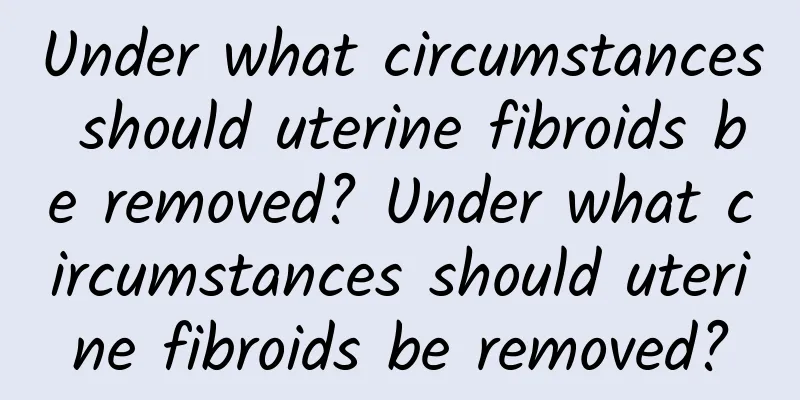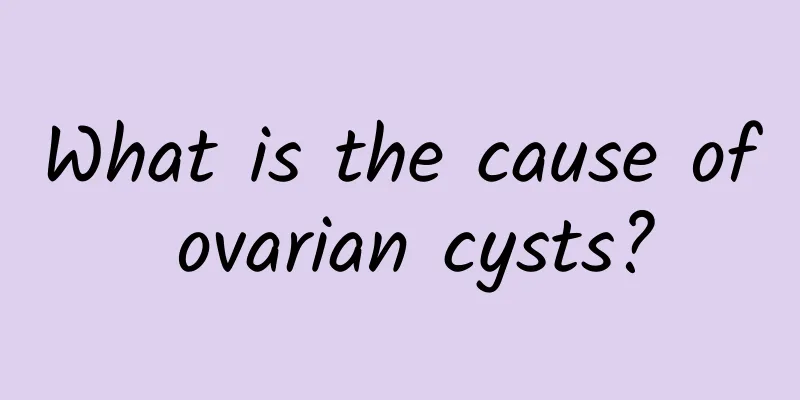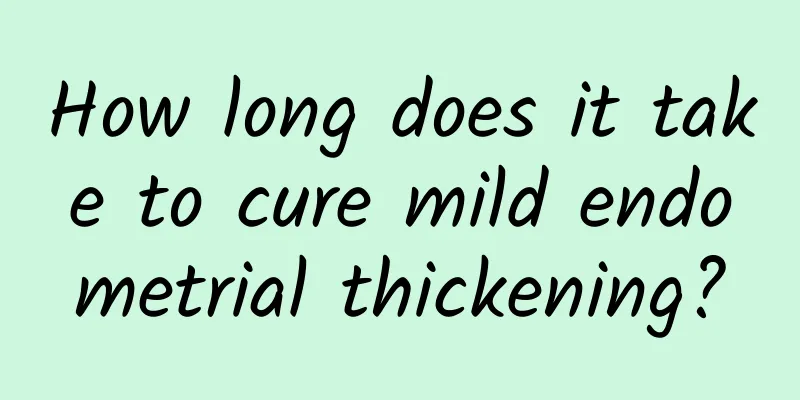Under what circumstances should uterine fibroids be removed? Under what circumstances should uterine fibroids be removed?

|
Under what circumstances should uterine fibroids be removed? Under what circumstances should uterine fibroids be removed? Uterine fibroids are common benign tumors in women, especially in women of reproductive age. They are tumors caused by uterine smooth muscle cell diseases, usually growing in the uterine wall, sometimes in the uterine cavity or on the surface of the uterus. Although most uterine fibroids are small and asymptomatic, in some cases, uterine fibroid removal is necessary. For patients who have obvious symptoms, it is necessary to remove the uterine fibroids. Some common symptoms include irregular menstruation, excessive menstruation, blood clots in menstrual blood, abdominal pain, pelvic pressure, etc. These symptoms will affect the patient's quality of life, and if not treated in time, they may lead to complications such as anemia and pelvic inflammation. Therefore, it is necessary to remove the uterine fibroids when these obvious symptoms appear. For patients with large or rapidly growing uterine fibroids, uterine fibroid removal is also necessary. Although most uterine fibroids grow slowly, some tumors grow rapidly. In this case, the uterine fibroids may reach a large size, which increases the difficulty of surgery, and benign tumors may also cause compression on surrounding organs, causing various discomforts. Therefore, for large or rapidly growing uterine fibroids, especially when they have affected the function of surrounding organs, uterine fibroid removal is necessary. Uterine fibroid removal can also be considered for patients in some special circumstances. For example, for young women, since the presence of uterine fibroids may affect fertility, it is necessary to remove the uterine fibroids. In addition, for postmenopausal women, since the presence of uterine fibroids no longer has fertility, and the enlargement of the tumor may cause more complications, uterine fibroid removal can also be considered. Removal of uterine fibroids is not suitable for all patients. The doctor will make a comprehensive assessment based on the patient's specific situation, including the size of the tumor, the growth rate, the severity of the symptoms, and the patient's own needs, and ultimately decide whether to remove the uterine fibroids. Therefore, after the patient finds that he has uterine fibroids, he should seek medical attention for a detailed examination and take appropriate measures according to the doctor's advice. When to remove uterine fibroids is a complex issue that requires comprehensive consideration of many factors. For some patients with obvious symptoms, large or rapidly growing uterine fibroids, and patients in special circumstances, uterine fibroid removal is necessary. Only through the doctor's careful evaluation and the patient's own decision can the most suitable treatment plan be found to maximize the treatment effect. |
<<: What is considered malignant uterine fibroids? Is malignant uterine fibroids uterine cancer?
>>: What is considered malignant uterine fibroids? Does malignant uterine fibroids mean cancer?
Recommend
Treatment methods for uterine fibroids surgery What to eat after uterine fibroids surgery
How many days does it take to recover from uterin...
What are the clinical manifestations of irregular menstruation?
What are the clinical manifestations of irregular...
What causes dysmenorrhea in girls?
What causes dysmenorrhea in girls? Many women hav...
Menopausal women are at risk of ectopic pregnancy if they do not pay attention to contraception
If menopausal women do not use contraception, the...
Uterine fibroids may also be caused by an unreasonable diet
Uterine fibroids may also be caused by an unreaso...
What are the causes of uterine fibroids? How to use medication for uterine fibroids
What are the causes of uterine fibroids? This has...
The key to winning a marathon: Swing your hands like this to run faster!
"Ah, running is just about running, who can&...
How to use medicine for endometrial tuberculosis
My menstruation is always irregular, so conceptio...
Effects of hyperprolactinemia in pregnant women on the fetus
There are many reasons for infertility. After the...
Top 10 fruits that can cause miscarriage
During pregnancy, pregnant mothers are always ext...
What does perimenopause mean?
What does perimenopause mean? Perimenopause refer...
How early can an ectopic pregnancy be detected?
How early can an ectopic pregnancy be detected? 1...
Can constipation cause delayed menstruation?
Can constipation cause delayed menstruation? The ...
Ke Nianxuan gained 10 kg after taking medication for hyperthyroidism
Young women are more prone to hyperthyroidism. Fe...
What are the causes of cervical erosion?
Cervical erosion is a type of cervical disease, w...









